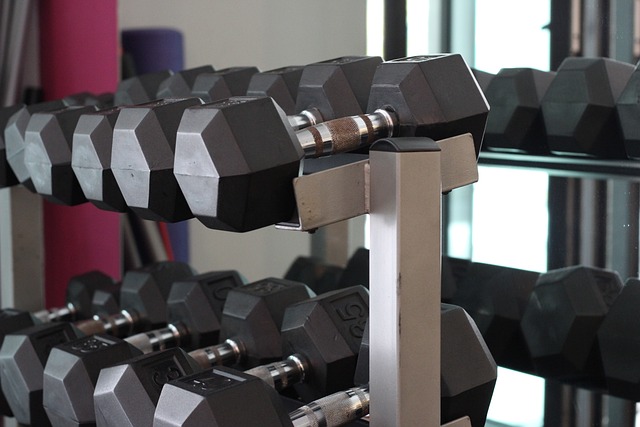Exercise is a cornerstone of a healthy lifestyle, but its implementation must be tailored to suit the unique needs and abilities of different age groups. From children to seniors, each stage of life presents distinct physical, mental, and emotional requirements that influence how workouts should be structured. Adapting workouts effectively ensures not only safety but also maximizes the benefits of physical activity. In this article, we’ll explore how exercise routines can be customized for various age groups, highlighting key considerations and practical tips.
Children (Ages 6-12): Building a Foundation for Lifelong Fitness
Children are naturally energetic and curious, making this an ideal time to instill a love for physical activity. However, their developing bodies require careful attention to avoid injury and promote balanced growth.
Key Considerations:
- Focus on Fun: Children are more likely to stay engaged in activities that feel like play rather than structured exercise. Activities such as tag, obstacle courses, or sports like soccer and swimming are excellent choices.
- Variety is Key: Incorporating a wide range of movements helps develop motor skills, coordination, and strength. Avoid repetitive exercises that could strain growing bones and joints.
- Shorter Sessions: Attention spans are shorter at this age, so workouts should last no more than 30-45 minutes. Frequent breaks and dynamic transitions keep them motivated.
- Encourage Teamwork: Group activities foster social skills and teach the importance of teamwork and sportsmanship.
Sample Workout for Kids:
- Warm-up: 5 minutes of jumping jacks or dancing.
- Main Activity: 20 minutes of relay races, hopscotch, or mini yoga sessions.
- Cool-down: Stretching with animal poses (e.g., “cobra” or “cat-cow”).
By focusing on fun and variety, parents and coaches can help children build a positive association with exercise that lasts a lifetime.
Teenagers (Ages 13-19): Balancing Growth and Performance
The teenage years are a critical period of physical development, marked by rapid growth spurts and hormonal changes. Exercise during this time can enhance athletic performance, boost confidence, and support mental health.
Key Considerations:
- Strength Training Safely: While weightlifting is beneficial, teens should focus on proper form and lighter weights to prevent injury. Bodyweight exercises like push-ups, squats, and planks are excellent starting points.
- Cardiovascular Health: Activities like running, cycling, or swimming improve endurance and heart health. These exercises also release endorphins, which can alleviate stress and anxiety.
- Sport-Specific Training: Many teenagers participate in organized sports. Tailored drills and conditioning programs can enhance performance while reducing the risk of overuse injuries.
- Mind-Body Connection: Practices like yoga or martial arts can improve flexibility, balance, and mental focus.
Sample Workout for Teens:
- Warm-up: 5-10 minutes of light jogging or dynamic stretches.
- Strength Circuit: 3 rounds of push-ups, lunges, and planks (30 seconds each).
- Cardio: 15-20 minutes of running or cycling.
- Cool-down: Gentle stretching or yoga poses.
Teenagers often face academic and social pressures, so incorporating mindfulness into their fitness routine can provide additional emotional benefits.
Adults (Ages 20-50): Maintaining Health Amidst Busy Lifestyles
For adults, exercise serves multiple purposes: maintaining physical health, managing stress, and preventing chronic diseases. This age group often juggles work, family, and personal responsibilities, making consistency a challenge.
Key Considerations:
- Time-Efficient Workouts: High-Intensity Interval Training (HIIT) or circuit training can deliver significant results in a short amount of time.
- Strength Maintenance: Resistance training is crucial for preserving muscle mass and bone density. Free weights, resistance bands, or bodyweight exercises are all effective options.
- Flexibility and Mobility: As adults age, flexibility tends to decline. Incorporating yoga or Pilates can counteract stiffness and reduce the risk of injury.
- Stress Management: Physical activity releases endorphins, which combat stress and improve mood. Low-impact activities like walking or swimming can be particularly soothing.
Sample Workout for Adults:
- Warm-up: 5 minutes of brisk walking or arm circles.
- HIIT Session: 20 minutes alternating between sprinting and walking.
- Strength Training: Dumbbell rows, squats, and core exercises (3 sets of 10 reps each).
- Cool-down: Stretching or foam rolling.
Adults should prioritize finding activities they enjoy, as this increases the likelihood of sticking to a routine long-term.
Older Adults (Ages 50+): Staying Active and Independent
As people age, maintaining mobility and independence becomes increasingly important. Regular exercise can help older adults manage chronic conditions, improve balance, and enhance overall quality of life.
Key Considerations:
- Low-Impact Exercises: Activities like swimming, cycling, or tai chi minimize joint stress while providing cardiovascular benefits.
- Balance and Stability: Falls are a major concern for seniors. Exercises such as standing on one leg, heel-to-toe walking, or using balance boards can strengthen stabilizing muscles.
- Strength Preservation: Light resistance training with bands or light weights helps maintain muscle mass and supports daily activities like lifting groceries or climbing stairs.
- Social Engagement: Group classes or walking clubs offer opportunities for social interaction, which is vital for mental well-being.
Sample Workout for Older Adults:
- Warm-up: 5 minutes of gentle marching in place or seated arm swings.
- Balance Exercises: Single-leg stands or side steps with a resistance band.
- Strength Training: Seated leg lifts, wall push-ups, or bicep curls with light weights.
- Cool-down: Deep breathing exercises combined with static stretches.
Older adults should consult healthcare providers before starting new routines, especially if they have pre-existing medical conditions.
